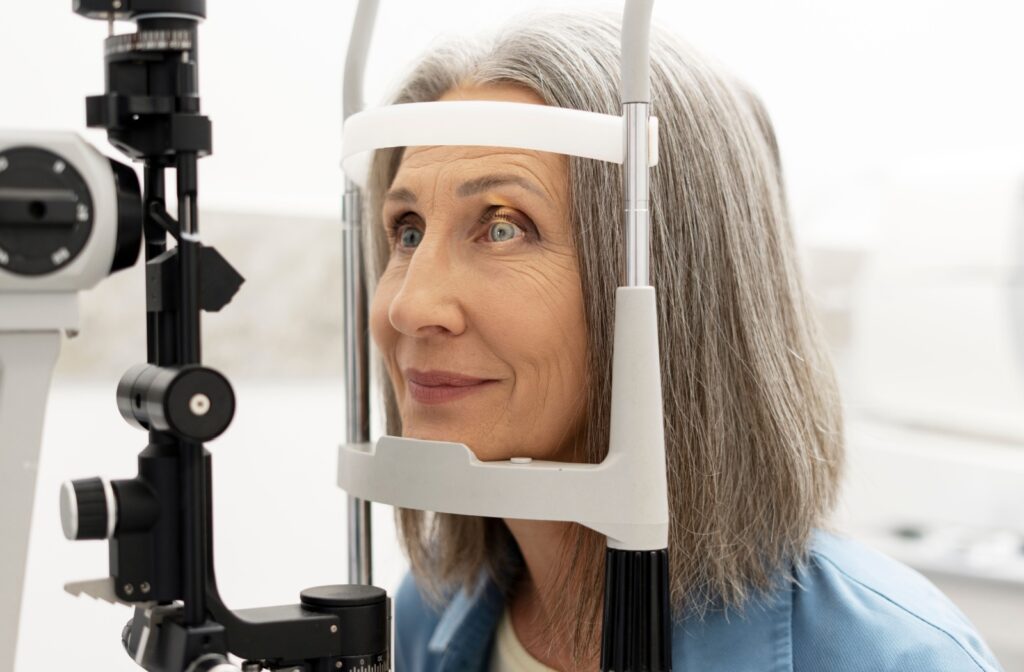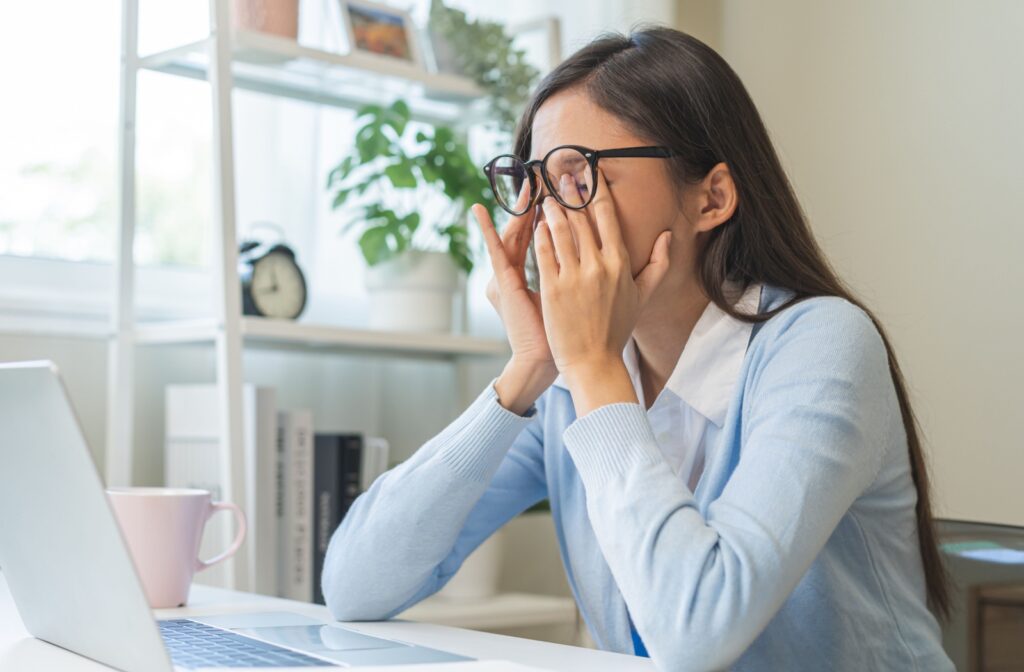Dry eyes and floaters are both common concerns that can interfere with your visual comfort, but are they connected? The short answer is no: dry eyes do not directly cause floaters. However, the 2 can sometimes feel related due to shared risk factors such as age, lifestyle, or general eye health. Knowing how these conditions differ and how to manage them can help protect your vision and improve your comfort.
In this blog, we’ll explore the differences between dry eyes and floaters, what causes them, and how you can manage or treat both conditions effectively.
What Are Dry Eyes?
Dry eyes occur when your eyes either don’t produce enough tears or the quality of your tears is poor, causing them to evaporate too quickly. This results in inflammation and irritation on the eye’s surface.
Common symptoms include:
- Burning or stinging
- A gritty or sandy sensation
- Redness or irritation
- Blurry vision
- Watery eyes (a reflex to dryness)
There are 2 main types of dry eye:
- Aqueous-deficient dry eye: Caused by reduced tear production from the lacrimal glands.
- Evaporative dry eye: Caused by meibomian gland dysfunction, where the oily layer of your tears is compromised, allowing them to evaporate too quickly.
Both types can affect how your eyes feel and function, and ongoing dry eye symptoms should be evaluated by an eye care professional.
What Are Floaters?
Floaters are tiny specks, spots, or cobweb-like shapes that drift across your field of vision. They’re usually most noticeable when looking at a bright background, like a clear sky or white wall.
Floaters form when the vitreous—the gel-like substance inside your eye—begins to shrink and liquefy with age. As the vitreous changes, small clumps or strands can cast shadows on your retina, creating the appearance of floaters.
Floaters are typically harmless, but a sudden increase in floaters, especially if accompanied by flashes of light or peripheral vision loss, could signal a more serious condition like a retinal tear or detachment. In such cases, seek emergency eye care right away.
Are Dry Eyes & Floaters Connected?
Although it’s common to experience both dry eyes and floaters—especially as you age—there is no scientific evidence that dry eyes cause floaters or vice versa. They are 2 separate conditions that affect different parts of the eye:
- Dry eyes affect the surface of the eye, particularly the tear film.
- Floaters are caused by changes in the vitreous humour, located deep inside the eye.
That said, both conditions can be influenced by similar factors, such as:
- Age: Tear production naturally decreases with age, and the vitreous becomes more liquid over time.
- Prolonged screen use: May lead to dry eye symptoms and increased awareness of floaters.
- Dehydration: Can worsen both dry eyes and the perception of floaters.
- Health conditions: Autoimmune diseases, diabetes, and other systemic issues can increase the risk of both.
Because of these overlapping risk factors, it’s possible to experience both conditions at the same time.

How to Manage Dry Eyes
If dry eyes are causing daily discomfort or blurry vision, treatment is available. Some effective options include:
In-Office Treatments
- Medicated eye drops: Prescription-strength drops help reduce inflammation and improve tear production for long-term dry eye relief.
- LipiFlow: This thermal pulsation treatment uses gentle heat and massage to unclog the meibomian glands, restoring healthy oil flow and improving tear stability.
- PRN omega-3s: High-quality omega-3 supplements formulated specifically for eye health help reduce inflammation and support tear film quality from the inside out.
At-Home Therapies
- Preservative-free lubricating drops
- Heated eye masks
- Lid hygiene wipes
- Omega-3 supplements
Combining these treatments with healthy lifestyle habits can bring significant relief from dry eye symptoms.
How to Manage Floaters
For most people, floaters are harmless and become less noticeable over time. However, if floaters are interfering with your vision, here are some options:
- Observation: In most cases, no treatment is required. Your brain may eventually adapt and “tune out” floaters.
- Vitrectomy: A surgical procedure where the vitreous gel is removed and replaced. This is only recommended for severe cases due to potential risks.
- Laser treatment (YAG vitreolysis): A laser is used to break up floaters, though results may vary and it’s not widely available.
Any sudden or dramatic increase in floaters, especially with light flashes or vision loss, should be evaluated urgently by your eye care provider.
Tips to Protect Your Eye Health
While you can’t always prevent floaters or dry eyes, adopting some healthy habits can help support your overall vision:
- Drink plenty of water: Hydration supports both tear production and eye comfort.
- Take screen breaks: Use the 20-20-20 rule—every 20 minutes, look at something 20 feet away for 20 seconds.
- Wear UV-protective sunglasses: Sunlight can worsen dry eyes and damage the retina over time.
- Eat a balanced diet: Include omega-3-rich foods like flaxseed, salmon, and walnuts, and antioxidant-rich vegetables like spinach, kale, and carrots.
- Avoid smoking: Tobacco can dry out your eyes and increase the risk of many eye diseases.
Take Control of Your Eye Comfort
While dry eyes and floaters may not be directly linked, they can both disrupt your daily life and comfort. Fortunately, with the right care, most people can find relief and maintain good vision. At Queensway Optometric Centre in Mississauga, we provide comprehensive care for a wide range of eye concerns, including dry eyes and floaters. If you’re noticing new visual symptoms or discomfort, book an appointment today—your eyes will thank you.


